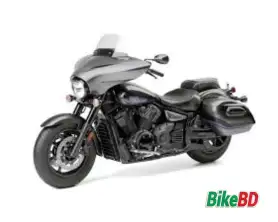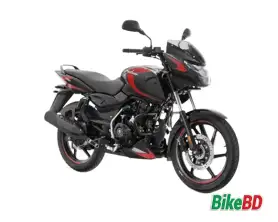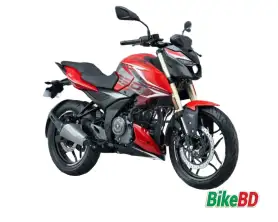Shares 2
Hornet-ABS VS FZS-ABS VS NS160-ABS Feature Comparison Review
Last updated on 11-Aug-2024 , By Arif Raihan Opu
The time has come when a buyer should face the complexity of getting diversified featured of motorcycles common in the market. Thus, people may get confused to make a proper buying decision even within a specific category. Hence, the same sequence is now present here in Bangladesh. That’s the reason pushed us to represent the Hornet-ABS VS FZS-ABS VS NS160-ABS Feature Comparison Review. So, let’s make a few bits of knowledge in detail and thus somewhat make you more confused!
Hornet-ABS VS FZS-ABS VS NS160-ABS Overview
In the first clause of comparison, the looks, design, and appearance somewhat take the priority. Here, all the three discussed models from Honda, Yamaha, and Bajaj are already known figure in the market. Hence most of the features of the motorcycles are very much known to the moto enthusiasts.
Thereby, not ignoring this vital corner we can enlighten that all the discussed models here refreshed with muscular, catchy and bold figures & appearances. Coming to the core concern, the design & appearance of the ABS-models are kept idle accept adding few cosmetic enhancements.
Here Honda CB Hornet 160R ABS crafted with all-new attractive graphics work. Furthermore, exterior enhancement comes on the headlamp assembly. It’s completely a new unit that facilitated with dedicated multi-pit LED headlamp including LED DRL. Side by side ODO display and control switches are also got a refreshment.

Coming to the new Yamaha FZS-FI V3 ABS, it’s completely a new machine from top to bottom. It comes with unmatched & unique design and exterior than the predecessor. It designed bold, bulky, muscled, and quite a rounded theme applied very precisely. Hence it created a new appearance, appeal, and attraction among the enthusiasts.
In the Bajaj Pulsar NS160-FI ABS, the machine remaining the same as the non-ABS version. Hence the looks, design, and appearances all are remaining unchanged. Further, the new variant identified with the new graphic design and color scheme. Hence, the ABS sensor fence mounted on the hydraulic disk and bikini underbelly cowling exposes the new model identity.

Frame, Wheel, Brake & Suspension System
All the three motorcycles picked here are covering the same street naked category. Further, the motorcycles are profiled attractively with some sporty features. Hence somewhat they carrying the streetfighter attitude and attire. Thereby not to mention but surely, they can be categorized as power commuters.
Here all the models came with attractive packages in terms of frame, wheel, brake, and suspension systems. This corner is now updated with the latest enhancements that literally pushed us to bring this comparison. Whatsoever, Hornet 160R-ABS and FZS-FI V3 came with a steel-pipe diamond frame. On the counter, NS160-FI ABS comes with a perimeter frame.
In the wheel setup, all the motorcycles carrying versatile features. Hornet 160R and FZS-FI holding a wider & lower profile of wheel and tire setup. Those are respectively 100/80-17 & 140/70-17 and 100/80-17 & 140/60-17 in Hornet & FZS-FI. But in counter NS160-FI holding quite a narrower wheel setup, that is 90/90-17 & 120/80-17 in front & rear. Further, all the motorcycles here featured with alloy rims and tubeless tires.
In the braking system, all the models here carrying the hydraulic disk brake system in both wheels. But Hornet 160R and NS160-FI also available in optional rear drum brake setup. In common all the three models equipped with non-switchable single-channel ABS features.
Further in the suspension system, all are carrying upright hydraulic telescopic fork suspension in the front and rear is mono. Here Hornet & FZS holding quite a fatter profile shock absorber in the front. In favor, NS160-FI holding gas-charged Nitrox mono-shock setup at the rear.
Hornet-ABS VS FZS-ABS VS NS160-ABS Engine & Performances
Being the updated and latest release, all the three discussed motorcycles here holding a varied engine tweaking and power rating. In common all the motorcycles here carrying single-cylinder, four-stroke engines but they featured differently.
Here, the Hornet 160R-ABS and FZS-FI V3 carrying an air-cooled 2-valve engine. But Hornet holding the conventional carburetor fuel feeding setup. Hence that ensures hassle-free maintenances and helps to minimize fuel contamination issues. On the counter, the FZS-FI engine featured with an Electronic Fuel-Injection system that provides altitude & environment compatibility and précised fuel efficiency.
In the Pulsar NS160-FI, the engine is featured with digital twin-spark ignition (DTS-I) including 4-valve and oil-cooling features. Moreover, adding new EFI replacing the old carburetor system made the engine more capable to deal against the rivals. Hence, considering engine displacement volume and other features & tweaking their performance figures are different.
Here, Hornet rated to deliver 11.1KW of power and 14.5NM of torque from its 162.71cc engine. The FZS-FI V3 (BS-IV) figured with 9.7KW of power and 12.8NM of torque from its 149cc engine. So on, Pulsar NS160-FI is tweaked for 11.4KW of power and 14.12NM of torque from its 160.3cc engine.
Meanwhile, all the engines here are BS-IV standard engine. But above all we should keep in mind, different weights, dimensions, and aerodynamics have a vital effect on real road performances. Furthermore, control, comfort, balance, and smoothness definitely matter in the long run.
Hornet-ABS VS FZS-ABS VS NS160-ABS - Added Features
The new Hornet 160R-ABS, FZS-FI ABS, Pulsar NS160-FI ABS, all the bikes placed with new enhancements of features. Here Hornet 160R and Pulsar NS160 is quite a familiar model in the market. But the Yamaha FZS-FI V3 is the all-new model in this row. Hence, more or less all of the models here came with some new features and enhancements. So, here are those.
Honda Hornet 160R-FI ABS
- All-new color & graphics scheme.
- BS-IV compliant HET Engine.
- All-new LED headlamp setup including a newly designed LED DRL System.
- Fully DC electrical system.
- Blue backlit digital ODO console.
- Newly designed control switch assembly and extended Sharee-guard.
- Hazard light system.
- Impressive single-channel ABS including CBS enhancement.

Yamaha FZS-FI V3 ABS
- Completely new look, design & Appearance. Hence, it’s an all-new machine.
- Newly refined and tweaked engine for smooth operation and performances.
- Fuel feeding updated with Electronic Fuel Injection System.
- All LED headlamp and newly designed negative display ODO panel.
- Single-channel ABS with dual hydraulic disc brakes.
- Improved body design and ergonomics for premium braking, control, comfort, and stability.

Bajaj Pulsar NS160R-FI ABS
- More eye-catchy graphics and color scheme with aggressive street macho design.
- BS-IV compliant DTS-I engine including new Fuel Injection system.
- Braking system updated with impressive single-channel ABS enhancement including wider hydraulic disk brakes.
- The tire dimension improved with a wider profile rear tire for better braking and controlling stability.
- Overall performance figure tweaked with newly added EFI system ensuring BS-IV compliance.

Hornet-ABS VS FZS-FI V3 ABS VS NS160-FI ABS Specification Comparison Table
| Specification | Honda Hornet 160R ABS | Yamaha FZS-FI V3 ABS | Pulsar NS160-FI ABS |
| Engine | Single Cylinder, Four Stroke, Air Cooled, SI Engine | Single Cylinder, Four Stroke, Air Cooled Engine | Single Cylinder, Four Stroke, Oil Cooled, Twin Spark DTS-I Engine |
| Displacement | 162.71cc | 149cc | 160.3cc |
| Bore x Stroke | 57.30mm x 63.9mm | 57.3mm x 57.9mm | Not Found |
| Compression Ratio | 10.1:1 | 9.5:1 | Not Found |
| Valve System | SOHC, 2-Valve | SOHC, 2-Valve | SOHC, 4-Valve |
| Maximum Power | 15.1PS (11.1KW) @8,500RPM | 13.2PS (9.1KW) @8.00RPM | 15.02PS (11.4KW) @8,500RPM |
| Maximum Torque | 14.5NM @6,500RPM | 12.8NM @5,500RPM | 14.12NM @6,500RPM |
| Fuel Supply | Carburetor | Fuel Injection | Fuel Injection |
| Ignition | DC-CDI | Electronic | Electronic |
| Clutch Type | Wet Type Multi-Plate Clutch | Wet Type Multi-Plate Clutch | Wet Type Multi-Plate Clutch |
| Starting Method | Kick & Electric | Electric Start | Kick & Electric |
| Air Filter Type | Viscous Paper Air Filter | Paper Air Filter | Paper Air Filter |
| Transmission | 5-Speed, 1-N-2-3-4-5 | 5-Speed, 1-N-2-3-4-5 | 5-Speed, 1-N-2-3-4-5 |
Dimension | |||
| Frame Type | Diamond | Diamond | Perimeter Frame |
| Dimension (LxWxH) | 2,041mm x 783mm x 1,091mm | 1,990mm x 780mm x 1,080mm | 2017mm x 803.5mm x 1060mm |
| Wheel Base | 1,346mm | 1,330mm | 1370mm |
| Ground Clearance | 164mm | 165mm | 177mm |
| Saddle Height | Not Found | 790mm | Not Found |
| Kerb Weight | 140Kg (ABS-STD) /141Kg (ABS-DLX) | 137Kg | 148Kg |
| Fuel Capacity: | 12 Liters | 13 Liters | 12 Liters |
Wheel, Brake, Suspension | |||
| Suspension (Front/Rear) | Telescopic Fork / Mono Shock Absorber | Telescopic Fork / Mono Shock Absorber | Telescopic Fork with Anti-Friction Bush / Nitrox Mono Shock Absorber with Canister |
| Brake System (Front/Rear) | 276mm Hydraulic Disk / 220mm Hydraulic Disk (130mm Drum) Single Channel ABS | 282mm Hydraulic Disk / 220mm Hydraulic Disk Single Channel ABS | 260mm Hydraulic Disk / 230mm Hydraulic Disk Single Channel ABS |
| Tire Size (Front / Rear) | Front: 100/80-17 Rear: 140/70-17 Both Tubeless | Front: 100/80-17 Rear: 140/60-17 Both Tubeless | Front: 90/90-17 Rear: 120/80-17 Both Tubeless |
| Battery | 12V 4Ah (MF) | 12V (MF) | 12V (MF) |
| Headlamp | LED Headlamp | LED Headlamp | H4 (12V 55/60W) Bulb |
| Speedometer | Fully Digital | Fully Digital | Digital Display with Analog Rev Counter |
*All the specifications are subject to change upon company rules, policy, offer & promotion. BikeBD is not liable for the changes. .webp)
Hornet-ABS VS FZS-ABS VS NS160-ABS Feature Comparison Review
So, readers, these are the comparative view of the features of Honda CB Hornet 160R-ABS, Yamaha FZS-FI V3 ABS and Pulsar NS160-FI ABS. Now at the last let’s face the reality, therefore, the pricing. Here all the bikes coming in our market in CBU conditions. Hence the price tags are as bellow.
Honda CB Hornet 160R ABS: 2,55,000 BDT
Yamaha FZS-FI V3 ABS: 2,77,000 BDT
Bajaj Pulsar NS160-FI ABS: 2,54,900 BDT
So, the decision is yours. Pick your bike according to your needs, requirements and of course within your budget. Thanks, everyone.
T
Published by Arif Raihan Opu














